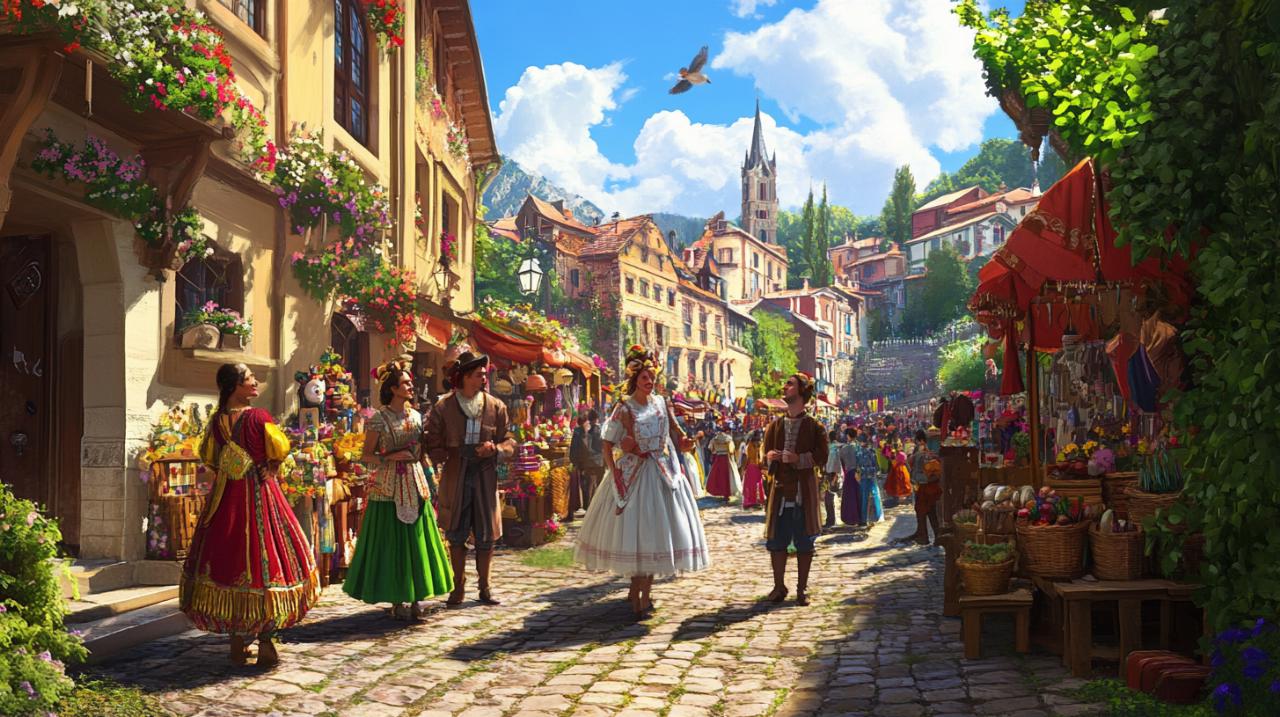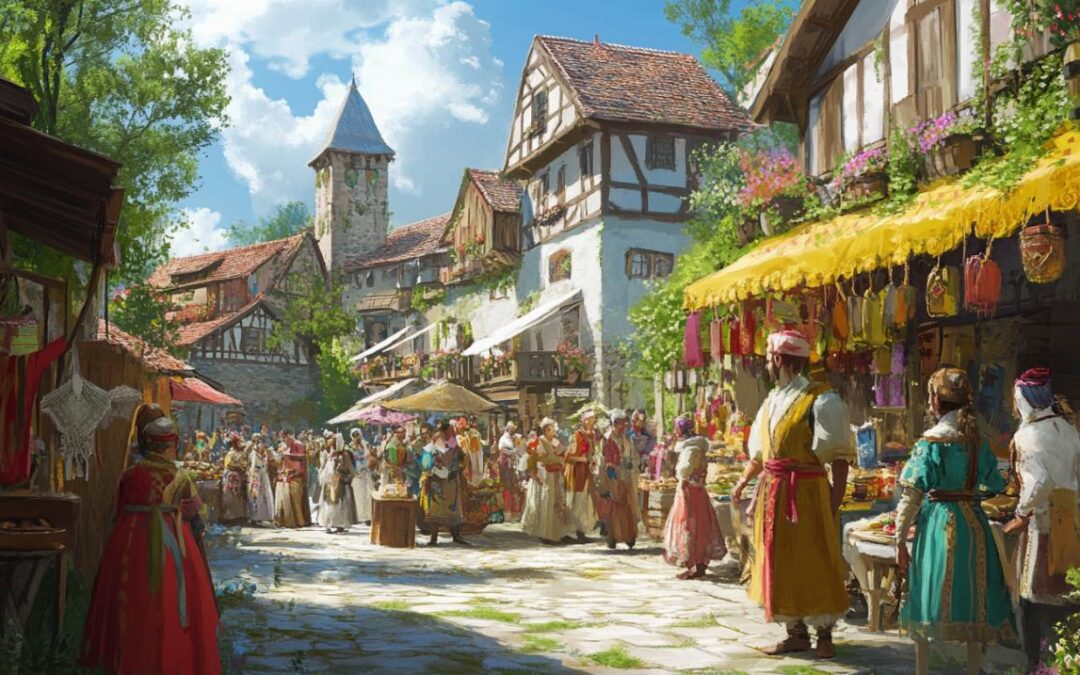For those keen to step away from the well-trodden tourist trails, Europe offers a wealth of enchanting destinations that blend cultural heritage with authentic local charm. From vibrant festivals that celebrate age-old traditions to bustling artisan markets brimming with handcrafted treasures, the continent’s lesser-known corners provide a refreshing alternative to the usual holiday haunts. Whether you’re drawn to the rustic allure of mountain villages or the sun-drenched shores of hidden islands, these experiences promise to enrich your travels with genuine connections and unforgettable memories.
Unearthing europe’s lesser-known cultural festivals
Regional celebrations that showcase authentic traditions
Europe’s hidden gems are not merely about scenic landscapes and quaint architecture; they also boast a calendar of regional celebrations that offer a window into the soul of local communities. In the heart of the Balkans, Bosnia and Herzegovina hosts a variety of festivals that reflect its rich Ottoman heritage and diverse cultural tapestry. These events, often held in remote villages, invite visitors to witness traditional music, dance, and cuisine that have been passed down through generations. The warmth of the locals and the authenticity of the celebrations make these gatherings a truly immersive experience, far removed from the commercialised festivals of more popular European cities.
Further west, the Austrian city of Graz surprises many with its vibrant arts scene and commitment to sustainability. Throughout the year, Graz hosts numerous cultural events that highlight local craftsmanship, contemporary art, and sustainable living. The city’s focus on eco-friendly practices extends to its festivals, where visitors can enjoy organic produce from nearby farms and handmade goods crafted by regional artisans. The culinary offerings are particularly noteworthy, with many events showcasing traditional Austrian dishes prepared using locally sourced ingredients. This emphasis on sustainability and authenticity has made Graz one of the best travel destinations for 2021, appealing to those who seek meaningful and environmentally responsible travel experiences.
In Eastern Europe, the Ore Mountains of Saxony transform into a winter wonderland during the festive season, with Christmas traditions that date back centuries. The region’s markets are renowned for their handcrafted decorations, wooden toys, and seasonal treats, all steeped in folklore and local heritage. The storied Leipzig market, for instance, has welcomed visitors since 1458, offering a glimpse into the past while celebrating the present. These festive gatherings are not just about shopping; they are community events where locals and visitors alike come together to share in the joy of the season, enjoying mulled wine, roasted chestnuts, and the sound of traditional carols echoing through the cobbled streets.
Planning your visit to off-the-beaten-track festival destinations
When planning a journey to these lesser-known cultural festivals, timing and preparation are key to ensuring a seamless and enriching experience. Spring and early autumn are ideal periods to explore Europe’s hidden corners, as the weather is generally pleasant and the crowds are thinner compared to the peak summer months. This shoulder season not only offers better value for money but also allows for a more intimate engagement with local customs and traditions. For those keen on attending specific festivals, researching the exact dates and booking accommodation well in advance is advisable, as many of these events attract a dedicated following despite their relative obscurity.
Transportation to off-the-beaten-path destinations often requires a bit more ingenuity than simply hopping on a direct flight to a major city. Renting a car can be an excellent option for exploring rural areas, providing the flexibility to visit multiple villages and towns at your own pace. In regions such as the Vipava Valley in Slovenia or the Frosinone Valley in Italy, a vehicle allows you to meander through vineyards, stop at local wineries, and discover hidden trails that are not easily accessible by public transport. Alternatively, some destinations are well-connected by regional trains or buses, which offer a scenic and budget-friendly way to travel while soaking in the countryside views.
Accommodation choices in these hidden gems range from charming agritourism properties to traditional guesthouses that reflect local architectural styles. Staying in such places not only supports the local economy but also enhances your cultural experience, as hosts are often eager to share stories about their heritage and recommend lesser-known attractions. In the Albanian city of Berat, for instance, guesthouses nestled within the historic Ottoman quarters offer stunning views of the city’s thousand windows and provide a cosy base from which to explore the ancient castle and surrounding hills. Similarly, in the mountain village of Castelmezzano in Italy, small family-run lodgings offer a warm welcome and insights into village life that larger hotels simply cannot match.
Discovering Treasures at Local Artisan Markets Across the Continent

What to Look For: Handcrafted Goods and Heritage Crafts
Local artisan markets across Europe serve as vibrant hubs where centuries-old craftsmanship meets contemporary creativity. These markets are treasure troves of handcrafted goods, from intricately designed ceramics and textiles to artisanal foods and vintage curiosities. In Tuscany’s Maremma region, for example, markets showcase leather goods, handwoven baskets, and locally produced olive oils and wines, all crafted with meticulous attention to detail. The beauty of these items lies not only in their aesthetic appeal but also in the stories they carry, as many artisans have honed their skills through generations of family tradition.
When visiting artisan markets, it is worth taking the time to engage with the vendors, who are often the creators themselves. Their passion and knowledge can provide invaluable context about the materials used, the techniques employed, and the cultural significance of their work. In the Greek Northern Aegean islands, for instance, local craftspeople produce hand-painted pottery and embroidered linens that reflect motifs unique to the region. By purchasing directly from these artisans, travellers not only acquire one-of-a-kind souvenirs but also contribute to the preservation of traditional skills that might otherwise be lost in an increasingly globalised world.
Flea markets and vintage stalls offer another dimension to the artisan market experience, with an eclectic mix of antiques, retro fashion, and forgotten treasures waiting to be rediscovered. In cities such as Florence, the Sant’Ambrogio market provides a delightful blend of fresh produce and vintage finds, making it a favourite among both locals and savvy travellers. The thrill of hunting through piles of old books, vinyl records, and quirky collectibles adds an element of adventure to the shopping experience, while also offering a glimpse into the past and the changing tastes of different eras.
Top Spots for Finding Unique Trinkets and Artisan Souvenirs
Across the continent, certain markets have earned reputations as must-visit destinations for anyone in search of unique trinkets and artisan souvenirs. Barcelona’s La Boqueria is a feast for the senses, with its colourful displays of seafood, Spanish delicacies, and fresh produce drawing food lovers from around the globe. Beyond the edible offerings, the market also features stalls selling handmade jewellery, spices, and crafts that capture the spirit of Catalonia. The lively atmosphere and the sheer variety of goods make La Boqueria not just a market but a cultural experience in its own right.
In Paris, the Marché Bastille is a beloved institution where locals gather to stock up on the finest baguettes, cheeses, and seasonal produce. The market’s stalls are a testament to France’s culinary heritage, with vendors taking pride in the quality and provenance of their products. For those with an eye for vintage fashion and homeware, the Portobello Road Market in London offers an extensive selection of antiques, retro clothing, and quirky collectibles. The market’s storied history and bohemian vibe have made it a favourite among both tourists and Londoners, providing endless opportunities to uncover hidden gems and one-of-a-kind pieces.
Vienna’s Naschmarkt is another standout, blending international and local flavours with a lively atmosphere that invites exploration. On Saturdays, the market expands to include a flea market section where vintage enthusiasts can sift through an array of antiques, old photographs, and retro homeware. Meanwhile, in Florence, the Mercato di Sant’Ambrogio remains a bastion of Tuscan tradition, offering everything from fresh truffles and pecorino cheese to handmade ceramics and leather goods. The market’s authentic character and its role as a meeting place for locals make it an ideal spot to soak up the rhythms of daily life while sourcing artisan souvenirs that tell a story.
To make the most of your market visits, arriving early in the morning is often recommended, as this is when the selection is at its best and the crowds are more manageable. Bringing cash is essential, as many vendors at smaller markets may not accept card payments. Engaging in friendly conversation with stallholders can lead to helpful tips, special deals, and even the chance to sample produce before you buy. At flea markets, a bit of haggling is not only acceptable but expected, adding an interactive element to the shopping experience. By planning your itinerary to coincide with market days and allowing time to explore nearby attractions, you can weave these vibrant community hubs into the broader tapestry of your European adventure, ensuring that your travels are as enriching as they are memorable.

